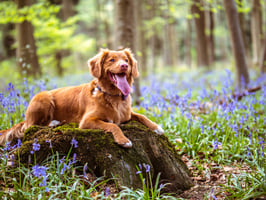Training a Bordoodle can be a rewarding and enjoyable experience for both the dog and the owner....
Border Terrier Training: The Complete Guide to Successful Obedience
Training your Border Terrier can be a rewarding experience for both you and your pet. With the right techniques, you can teach your pup to be obedient and responsive, making your life together easier and more enjoyable. In this guide, we’ll cover the basics of Border Terrier training, from how to get started to more advanced techniques.
Getting Started with Border Terrier Training
Before you begin training your Border Terrier, it’s important to understand the basics of canine behaviour. Dogs are pack animals, so they respond to hierarchy and leadership. To be successful in your training, you must establish yourself as the leader of the pack. This means setting boundaries and rules, and consistently enforcing them.
It’s also important to understand the type of breed you are dealing with. Border Terriers are high-energy dogs with an independent streak. They are smart and eager to please, but they can also be stubborn. Training should be consistent, with clear rules and expectations set from the start. This will help your pup understand what is expected of them and make it easier to follow commands.
Positive Reinforcement
Positive reinforcement is an effective way to train any dog, including Border Terriers. This means rewarding desired behaviours with treats, praise, and other rewards. The key is to reward immediately after the desired behaviour is exhibited. This will help your pup understand which behaviours are expected of them and make them more likely to repeat them. Positive reinforcement will also help to create a bond between you and your pup, making training easier and more enjoyable.
When using positive reinforcement, it’s important to use treats and rewards that your pup finds rewarding. This could be treats, toys, or even verbal praise. You also want to make sure that you are consistent with your rewards. If you give a reward for one behaviour and not for another, your pup may become confused or frustrated.
Establishing Boundaries and Rules
Setting boundaries and rules is an important part of Border Terrier training. This means setting expectations for behaviour and consistently enforcing them. This will help your pup understand what is expected of them and make it easier to follow commands. Establishing boundaries and rules also helps to create a sense of structure and security for your pup, which can help to reduce stress and anxiety.
When setting boundaries and rules, it’s important to be consistent and clear. Make sure that you communicate your expectations clearly and consistently. It’s also important to provide consistent consequences for unwanted behaviour. This could be a verbal reprimand or a time-out, depending on the behaviour.
Socialisation and Obedience Training
Socialisation and obedience training are important steps in Border Terrier training. Socialisation helps your pup learn how to interact with other dogs and people, while obedience training teaches them how to respond to commands. Both of these activities can help to create a bond between you and your pup, as well as teach them important skills.
When socialising your pup, it’s important to make sure they are exposed to a variety of people and dogs. This will help them learn how to interact with different types of people and dogs and become more confident. When it comes to obedience training, it’s important to start with basic commands such as sit, stay, come, and leave it. As your pup learns these commands, you can gradually add more complex ones.
Conclusion
Training your Border Terrier can be a rewarding experience for both you and your pup. By understanding the basics of canine behaviour, establishing boundaries and rules, and using positive reinforcement, you can teach your pup to be obedient and responsive. Socialisation and obedience training can also help to create a bond between you and your pup, as well as teach them important skills. With the right techniques, you can make training your Border Terrier an enjoyable experience.



